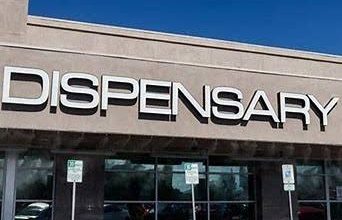Customers earning money while shopping may appear strange at first, but practice shows that if the cashback incentive is well-thought-out and the audience is well-targeted, cashback rewards may be the right way to re-engage customers, giving them another reason to return to your store on a regular basis. In this article, I’m going to show you all you need to know about the cashback reward program.
What Is a Cashback Reward Program?
Cashback incentive schemes are distinguished by a simple, yet addicting formula: for each transaction made, customers earn a tiny bit of money back. Cashback deals are popular because they offer immediate gratification, supporting the customer’s decision to shop. A key disadvantage of a cashback reward scheme is that it prioritizes rapid delight and financial incentives over long-term enjoyment.
The notion of cashback is not new, but it has been reinvented numerous times as technology has evolved. Among the most recent innovations are:
- Cashback offers are tailored to the customer’s location and purchasing history.
- For optimal convenience, the cashback reward program is available as an app.
- Cashback credits are automatically paid when a certain card is used, thanks to card-linked technology.
What Kind of Businesses Benefit from a Cashback Reward Program?
Offering cashback benefits, not all businesses. Luxury fashion firms, for example, would risk undermining their clients’ expectations of particular perks and privileges. In general, cashback works effectively in the finance industry, such as that provided by banks or credit card firms. Because they interact with a big number of brands from a range of verticals, malls, airports, and other significant retail hubs may benefit more from a cashback incentive program.
Finally, these programs are great for wholesale businesses that sell their products through retailers yet want to strengthen their relationships with their customers. Wholesalers can persuade clients to bypass the intermediary and buy directly from them by giving a rebate arrangement, allowing the company to gain vital data that it would have otherwise missed while selling through retailers.
Setting Up a Cashback Reward Program in 3 Easy Steps
There are several approaches to establishing a cashback reward program, Some of them include:
- Build the technology in-house to manage it
- Partner with a third-party card provider or app
- Utilize your loyalty program platform and add cashback as a feature
Obviously, collaborating with a third-party card provider or cashback software is the quickest, simplest, and most straightforward option. They already have a user base and proven technologies. When you partner with a firm like Revolut, you can add your own cashback offers to their list of incentives.
On the other hand, this implies that your brand is merely one of many in their network. This frequently puts pressure on businesses to differentiate themselves by raising the amount of cashback they give, eroding their profit margins. Furthermore, businesses miss out on crucial data that they could otherwise leverage with their own solution. As a result, it’s time to consider how to implement a cashback offer in a more sophisticated structure, such as a loyalty program.
#1. Step 1: Create a Cashback Account
Cashback points and reward points are sometimes confused. Despite the fact that both are awarded for completing a purchase, payback points decide the amount of money consumers get, whereas reward points are a program-specific currency that can be redeemed for a voucher or spent on gifts and services. Tier status can also be calculated using reward points.
It is crucial to recognize that cashback points and rewards points are not interchangeable. As a result, to avoid misunderstanding and complications within the incentive system, they should be calculated in separate accounts. In the case of a loyalty program that offers cashback, platform users must create an additional cashback account.
The cashback account’s main purpose is to keep track of how much cashback clients are eligible for without influencing members’ reward point balances.
#2. Step 2: Set Up Cashback Campaigns
Recall that one-size-fits-all solutions are no longer practical in this day and age, and cashback reward programs are no exception. While creating a campaign in which all customers earn the same amount of cashback on all offers may appear to be the simplest option, it will not be interesting to customers.
Instead, consider creating multiple campaigns with varying payback rates based on a range of criteria:
- The kind of transaction – provide premium pricing for in-store, webshop, or app-based orders; this will help you drive sales through your preferred sales channel.
- Region – In a new territory, offering bigger cashback bonuses for a brief time helps to swiftly create a customer base.
- Product – Increasing the payback rate for specific brands or product types draws attention to them. This is an excellent method for getting rid of an old product or emphasizing fresh arrivals.
Make sure to configure the incentive before the new cashback reward program campaign goes live. There are two choices:
- Consumers are given a set amount of money back, such as “$15 payback on all T-Shirts.”
- Consumers are offered a percentage-based discount, such as “Receive 5% back on every dollar spent.”
#3. Step 3: Managing Cashback Requests
Smooth process management is an essential component of any cashback reward scheme. After a consumer makes a purchase, you must collect the necessary information in order to carry out the cashback offer. This can refer to the purchase value, product categories, geography, and so on, depending on the complexity of your campaign.
Collecting this information is simple for an eCommerce site, but if you’re running cashback discounts in physical stores, you’ll need a POS system or ask customers to scan and email in their receipts to receive their cashback.
Once your Order Management System has gathered all of the relevant data, it must be able to communicate it with the platform in charge of cashback marketing. This requires integration and ensures that the customer’s cashback account is appropriately updated. If you choose Antavo as your loyalty management platform, integration with your Order Management System will be set up as part of the deployment process.
Last but not least, you must determine how to deliver the cashback:
- The funds can be transferred via a fulfillment partner.
- To receive the cashback, use a wire transfer.
- Or let customers use the cashback toward their next purchase
Should Cashback Be a Loyalty Program Reward?
While developing the concept for their cashback incentive program, businesses frequently consider whether it should be part of a full-fledged loyalty program or whether the cashback alone is sufficient to retain clients. A few years ago, one might have made a strong case for the latter, citing previous studies that found financial incentives such as coupons and cashback to be the most popular.
Nevertheless, since 2019, things have altered. Customers’ expectations have shifted as a result of the recent digital transition, and they now anticipate more customization, experiential rewards, and non-transactional involvement than ever before. The most notable disadvantages of a cashback incentive program are that it focuses solely on transactional benefits and that adding substantial improvements to the system (e.g. badges, challenges, or gamification) requires a significant amount of time, effort, and money.
Combining Cashback Reward Programs and Loyalty Programs
Another disadvantage of having a separate cashback reward system is that competitors can easily replicate the concept and launch their own cashback programs. In addition, if others provide higher rates or other incentives, your system will be less tempting in comparison.
Overall, including cashback benefits as part of a loyalty program promises to make the package considerably more appealing to customers. Although creating a loyalty program needs more planning and a larger cost at first, it generates better results:
- A loyalty program, in addition to payback, provides additional reasons to retain clients, such as levels.
- It delivers a far more meaningful experience to customers
- It is simpler to add new modules to the core technology.
- Loyalty programs expand the possibilities for data collection and customization.
- 93.1% of program owners who track ROI report a positive ROI, indicating that even if the original investment is large, profits will be realized over time.
Cashback Loyalty from the Customer’s Perspective
Customers prefer to be rewarded, which is why referral and loyalty programs are so popular; in fact, it’s difficult to find a large online company that doesn’t have a membership program.
In theory, cashback rewards should be a client favorite; after all, who wouldn’t want to earn money while shopping? The nicest part about cashback is the fast gratification it provides – clients usually receive their money back right away. Regrettably, there is frequently a catch. Yeah, the money appears on the account immediately after purchase, but clients cannot withdraw it at any moment – only after accumulating a certain amount (e.g., $20 or even $50). A method like this is designed to encourage customers to buy more in order to earn additional rewards.
The disadvantage of cashback programs is that retailers often allow for low cashback rates ranging from 0.5% to 5%. There are rare exceptions, but if a company offers high-rate cashback, there is usually a dollar limit – for example, 15% cashback, but only up to $50. Certainly, it’s still a nice offer, but if customers find out the hard way (for example, after paying $1,500 for a TV), they might be irritated. Hence, to avoid unpleasant shocks, make the cashback program obvious.
Why do Retailers Launch Cashback Loyalty Programs?
Incorporating cashback rewards in a company’s marketing stack is an excellent method to promote new products or services, such as a mobile app. How does it function? For example, a corporation may provide cashback solely to consumers who place orders using a mobile app, incentivizing them to download and use the app.
Further customization of cashback programs (and loyalty programs in general) allows businesses to impose restrictions – one of the most prevalent is to allow customers to spend reward money only on specific products. This method encourages individuals to try out other things because they’ve already earned a nice “discount” by purchasing the products they desired in the first place.
Setting too severe spending limits on cashback may become one of them: customers enjoy getting money back (even if it’s a small fraction of what they spent), but finding out that they can’t do whatever they want with the money may be frustrating. This is why open communication should be the norm in such situations.
How does Cashback Reward Program Work?
Credit card cash-back rewards are benefits given to credit card members when they make purchases with their cards. Cash back benefits can be in the form of money or points, with points often redeemable on the card issuer’s online marketplace. Cash back benefits are calculated as a percentage.
Is Cashback Rewards Free Money?
You have to spend money to get money back, so it’s not quite free money. Cash back schemes are offered by credit card issuers to encourage customers to use their cards. The cash back you could get is merely a part of the merchant fees charged by your card provider.
Do Cashback Cards actually give you Money?
Cashback credit cards allow you to earn money from the money you spend by either paying you back a percentage of what you spend or rewarding you with reward points. They only make sense if you pay off your bill in full each month and never exceed your credit limit. Otherwise, the cost of interest will surpass the benefits.
How do I Redeem Cashback Cash?
You can redeem your cash back cash by taking the following steps:
- Statement credit: Put cash back to your account balance as a credit.
- Direct deposit or paper check: You can frequently request a paper check or transfer cash back to a linked bank account.
- Gift cards: You may be able to redeem cash back for various gift cards with some cash-back cards.
Are Cashback Rewards worth it?
Certainly, cash back credit cards are worthwhile if you pay off your entire bill each month. You’ll get cash back on purchases with no interest charges from the credit card company. It’s a simple method to get money back on your usual costs for free.
Is it better to get Cashback or Rewards?
In general, cash back is the superior option for those looking for simplicity and the ability to earn flexible rewards on ordinary transactions. Cash back credit cards pay a percentage of your purchases in cash back, with some cards paying a larger rate in some areas than others.
Conclusion
This post was written to help you understand how to implement a cashback reward program. Keep in mind that, while cashback is an exciting and well-appreciated reward, it will not increase client brand loyalty. As a result, it pays to plan ahead of time and establish a loyalty program that goes beyond cash rewards to generate memorable experiences through emotional loyalty.
Related Articles
- HOW MUCH CASH BACK CAN YOU GET AT WALMART?
- CASH BACK STORES: Top 15 Stores That Do Cash Back
- BEST CREDIT CARDS WITH CASH BACK 2023
- CASH BACK APPS 2023: The Best 17 Apps in 2023, Revealed!!!
- Customer Loyalty Programs & Ideas (+Top Rated Programs in 2023)
- PREPAYMENT PENALTY MORTGAGE: How It Works
- BEST BAD CREDIT AND UNEMPLOYED HARDSHIP LOANS IN 2023






